A STEVEDORE ON BOARD A GENERAL CARGO SHIP WAS FATALLY CRUSHED BETWEEN THE GANTRY CRANE AND A HATCH COVER DURING CARGO DISCHARGE IN ANTWERP, BELGIUM. DESPITE NO ONE WITNESSING THE INCIDENT, IT IS BELIEVED THAT HE POSITIONED HIMSELF BETWEEN THE MOVING GANTRY CRANE AND THE HATCH COVER TO CHECK ON HIS TEAM’S PROGRESS WORKING IN THE HOLD.
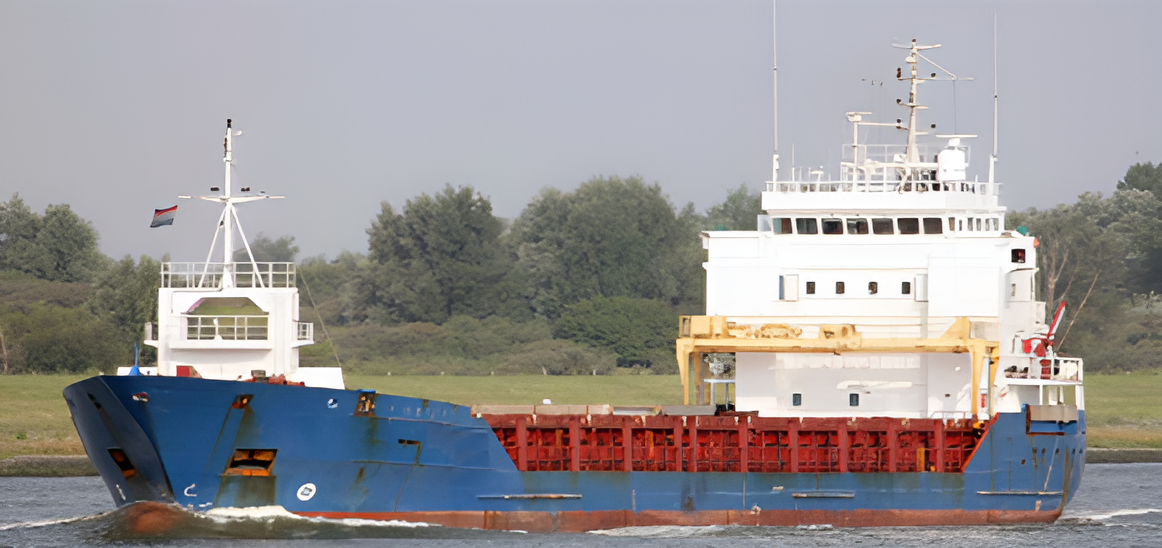
Source Marine Accident Investigation Branch - Accident Report 12/2021
WHAT HAPPENED
A general cargo ship moored starboard side to berth, at a bulk terminal, to unload its cargo of fine coke, also known as ‘coke breeze’. The weather was cloudy, with light rain and a gentle breeze coming from the north. Between midnight and 0600 hours, the third officer on watch was operating the ship’s gantry crane (Figure 2), to stack the hatch covers, following the cargo unloading plan (Figure 3).
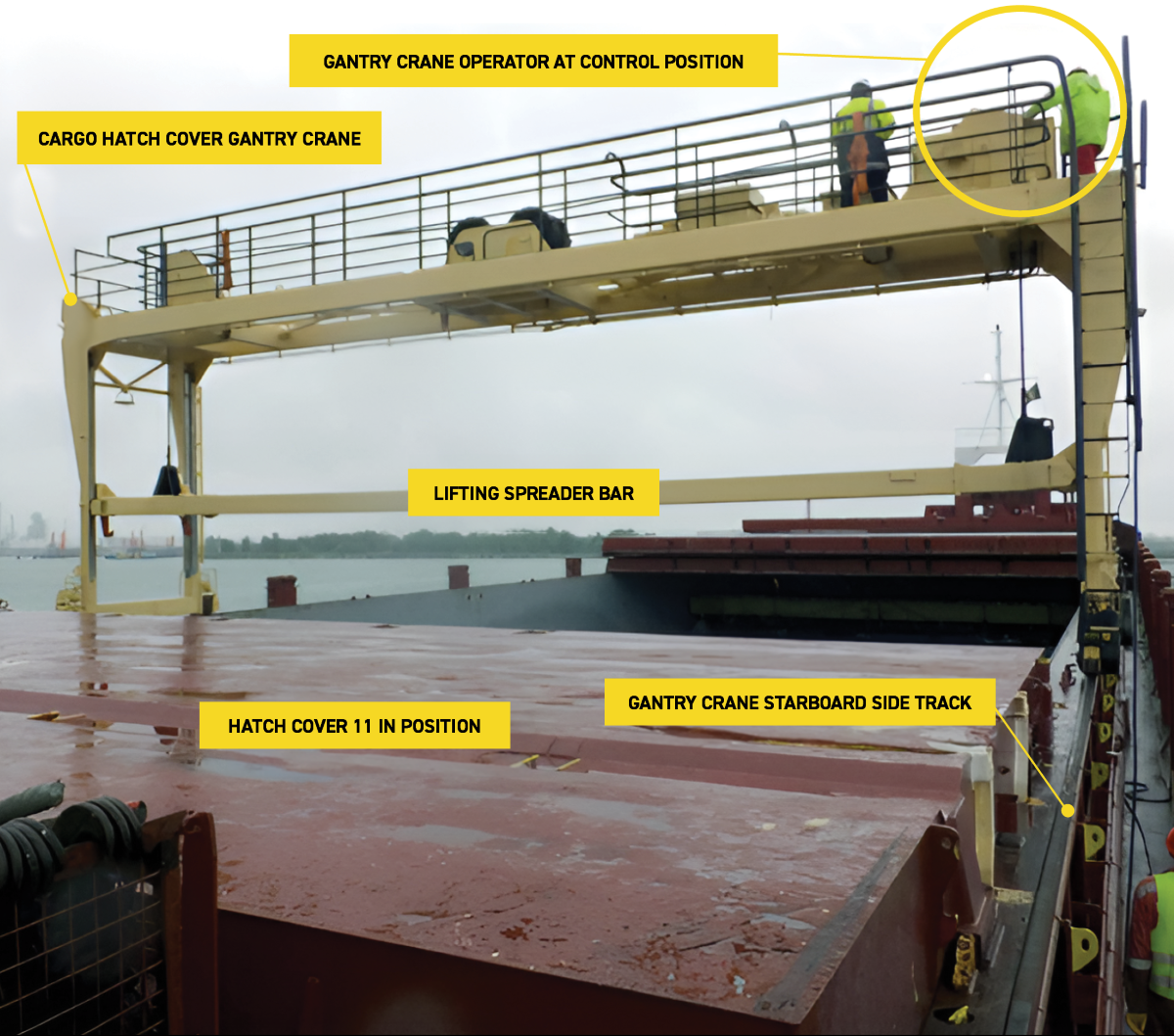
Source Marine Accident Investigation Branch - Accident Report 12/2021
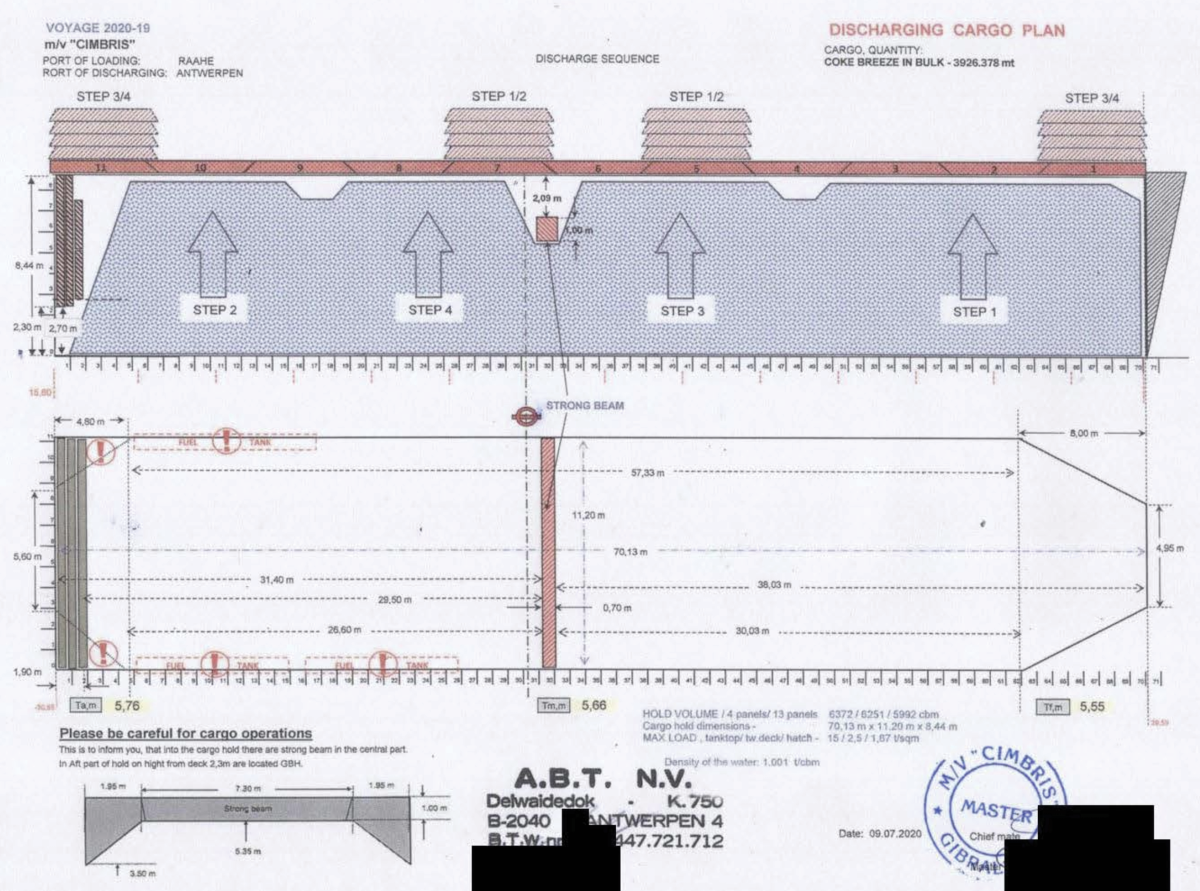
Source Marine Accident Investigation Branch - Accident Report 12/2021

Source Marine Accident Investigation Branch - Accident Report 12/2021
At 0600 hours, five stevedores boarded the ship to begin unloading the cargo. The team consisted of a foreman, a stevedore coordinator, a front-end loader driver, and two dockworkers/cleaners. Another team member remained onshore to operate the discharge grab crane. The foreman discussed the unloading plan with the chief officer (C/O) in English and briefed the rest of his team. Unloading started at the aft end of the hold, with the foreman instructing that hatch covers 7 to 11 should be moved once this area completed discharge. The foreman then left the ship while the stevedore coordinator, loader driver, and dockworkers remained on board.
The stevedore coordinator directed the shoreside crane operator from the ship’s port side walkway using a handheld radio. To oversee the operation, he climbed the ship’s fixed ladders and leaned over the top of the 2m high hatch coaming to view the progress inside the cargo hold (Figure 5). Meanwhile, the C/O and an able-bodied seaman (AB) remained on board with the C/O monitoring cargo operations and the ship’s stability, while the AB maintained security at the gangway to monitor mooring lines and fendering.
Shortly before 0900 hours, as the unloading of the aft part of the hold neared completion, the stevedore coordinator confirmed with the C/O that, once the front-end loader had been lifted into the hold by the shore crane, hatch covers 7 to 11 would be moved aft and stacked at the hatch cover 11 position. The transfer of the front-end loader into the hold was supervised by the coordinator, and once completed, the C/O made his way to the ship’s gantry crane, while the stevedore coordinator proceeded towards the forward end of the hold via the port walkway.
The C/O ensured that the gantry crane’s path was clear on both sides of the main deck before climbing up to the crane’s control position. He then moved the crane forward and positioned it over the hatch covers stacked on hatch cover 7. Next, he connected hatch cover 11 to the crane, lifted it clear, and moved the crane aft, lowering the hatch cover into position. The C/O then climbed down to the main deck and walked around the hatch cover to confirm it had seated fittingly on both sides before returning to the crane’s control position to proceed to collect hatch cover 9.
Meanwhile, the shore crane began its work in the forward part of the hold under the supervision of the stevedore coordinator, who then went to check on the progress of his colleagues in the aft part of the hold. At the same time, the C/O had already checked the clearance on the walkways and coamings before climbing back to the control position to drive the gantry crane aft.
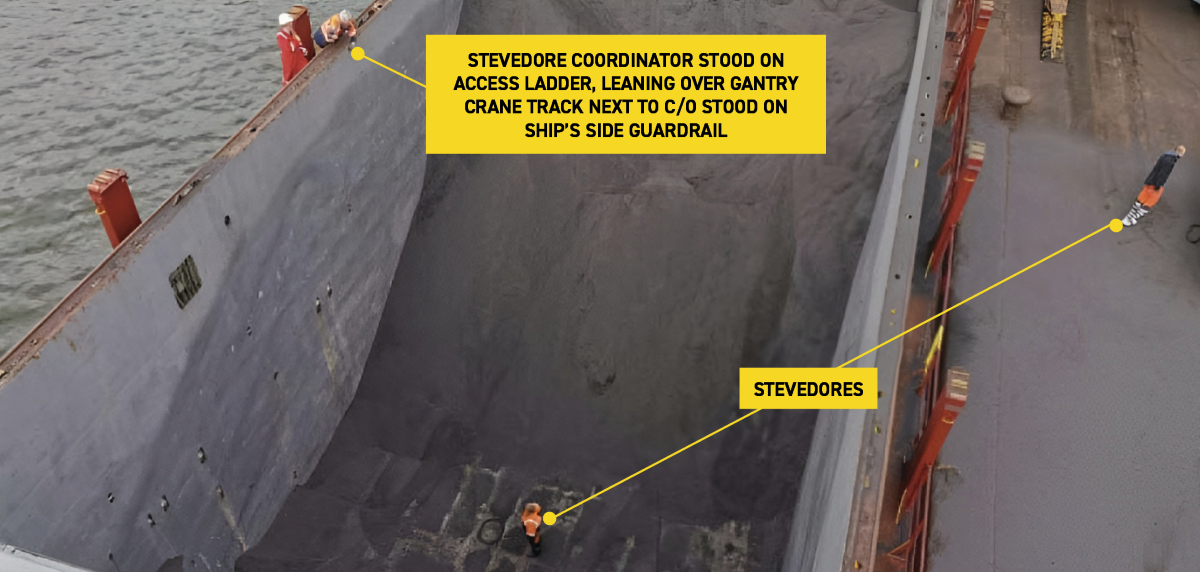
Source Marine Accident Investigation Branch - Accident Report 12/2021
Around 0900 hours, while the C/O was moving the gantry crane over hatch cover position 10, it abruptly stopped (Figure 6). At this point still uncertain of the cause, the C/O was alerted by the stevedore foreman who was boarding the ship. The foreman spotted the stevedore coordinator’s head above hatch cover 11 on the port side. Realising an accident had occurred, they both hurried to the portside aft walkway, where they found the stevedore coordinator trapped between the aft leg of the gantry crane and hatch cover 11, with a gap of approximately 130mm (Figure 7). It should be noted that when the hatch cover was suspended, the stevedore coordinator remained obscured and could not be seen by the C/O.
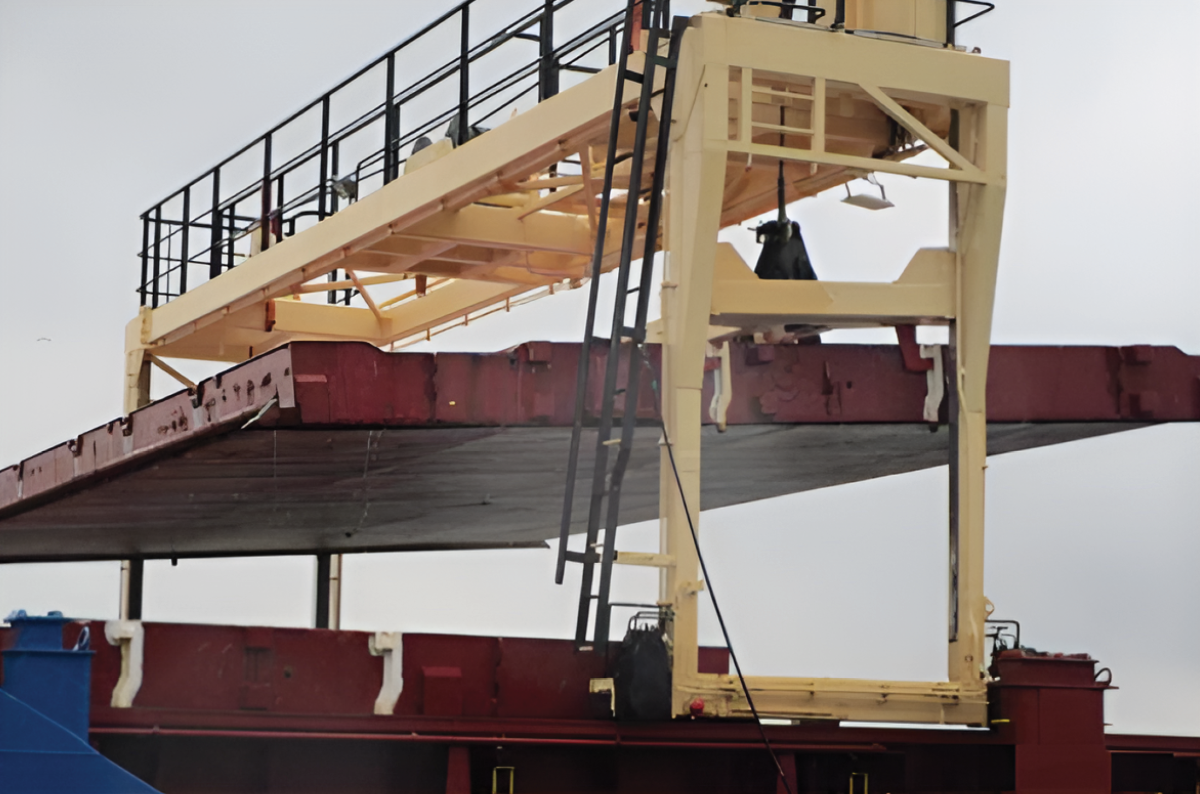
Source Marine Accident Investigation Branch - Accident Report 12/2021
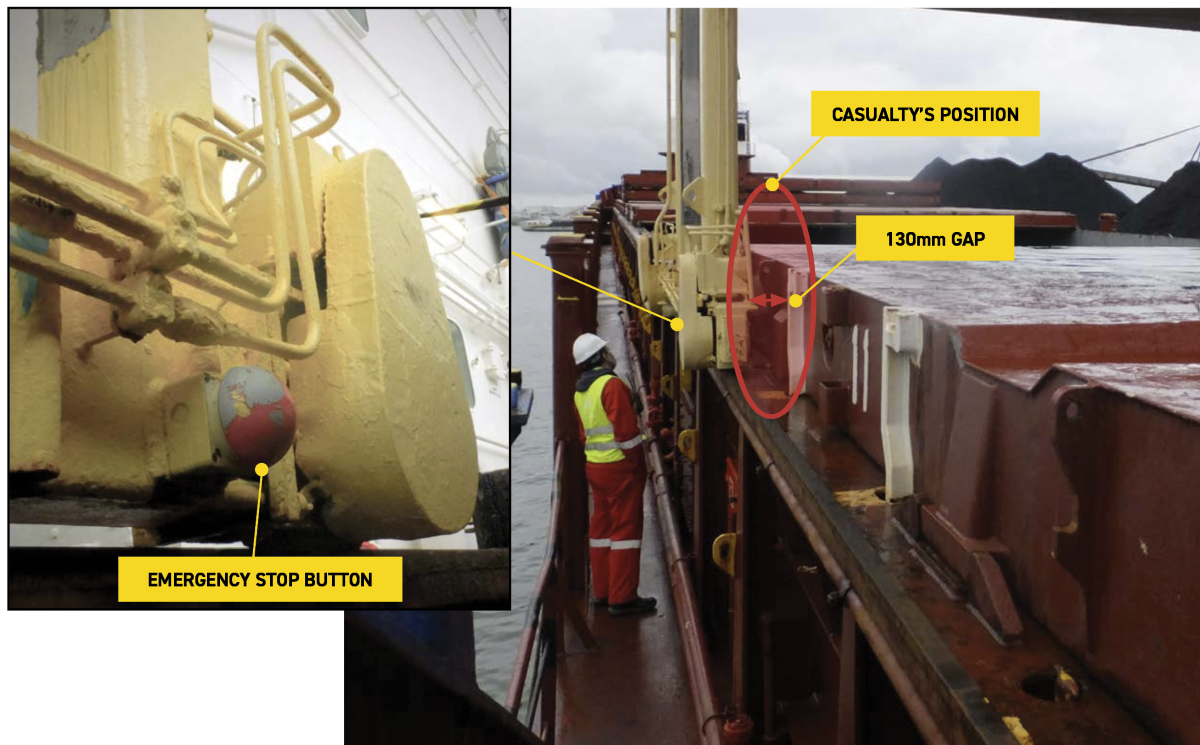
Source Marine Accident Investigation Branch - Accident Report 12/2021
Immediately, the foreman ordered the cessation of the unloading operation and the evacuation of the personnel on board. The foreman radioed the terminal operations supervisor, while the C/O notified the master about the incident. The terminal operations supervisor promptly dispatched the port’s emergency services.
Tragically, the stevedore coordinator sustained severe injuries and was pronounced dead at the scene by the terminal’s emergency services.
POST ACCIDENT FINDINGS
The inspection of the gantry crane revealed that its emergency stops, movement warning bell, and flashing light were all functioning properly. The loudness of the warning bell and the visibility of the flashing light meant it is unlikely that they were drowned out by ambient noises at the time of the accident. However, the suspended hatch cover could have obscured the flashing light from the view where the stevedore coordinator was positioned, as the crane approached.
At the start of the operation to move hatch cover 9, there was a clear line of sight from the gantry crane’s control position to the area where the stevedore coordinator was later crushed (Figure 8). However, as the gantry crane approached hatch cover position 10, visibility of the crush site became obscured by the suspended hatch cover. The distance from the starting position to where the crane structure aligned with hatch cover 11, where the coordinator was trapped, was about 20 meters. From the post-accident report, a reconstruction of the accident shows that it takes approximately 45 seconds for the crane to travel from hatch cover 7 to hatch cover 11, with the crush site becoming obscured from the crane’s control position for the final 20 seconds of travel.
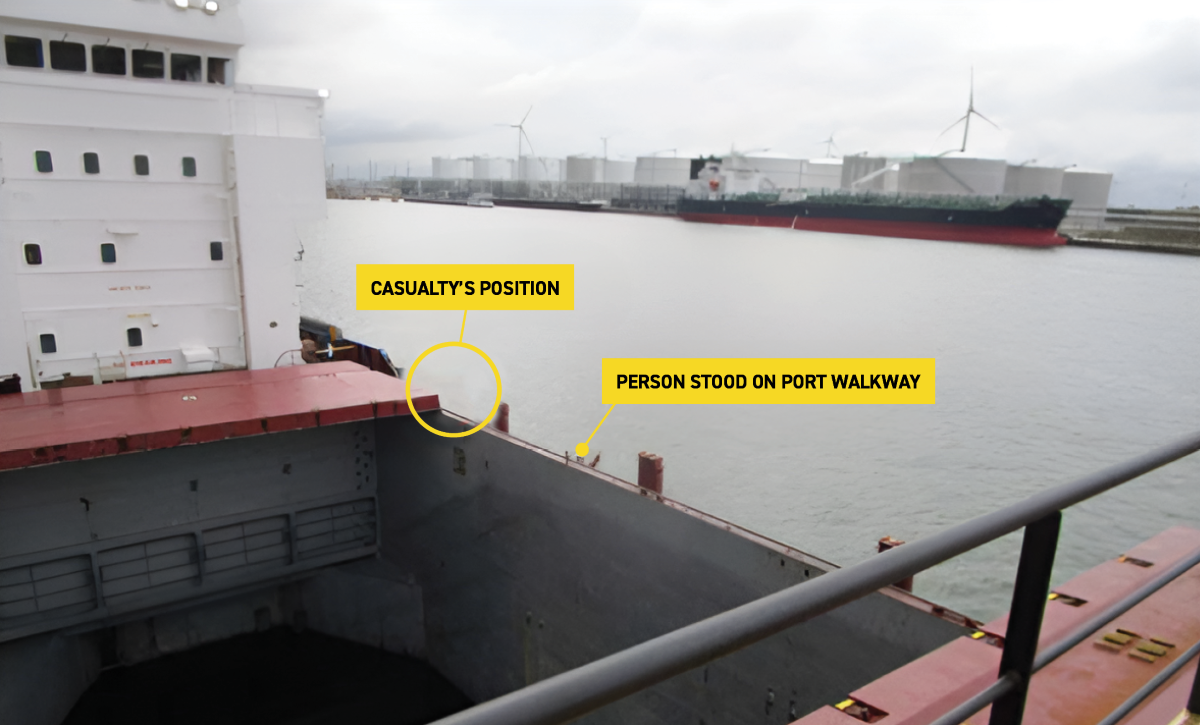
Source Marine Accident Investigation Branch - Accident Report 12/2021

 English
English
